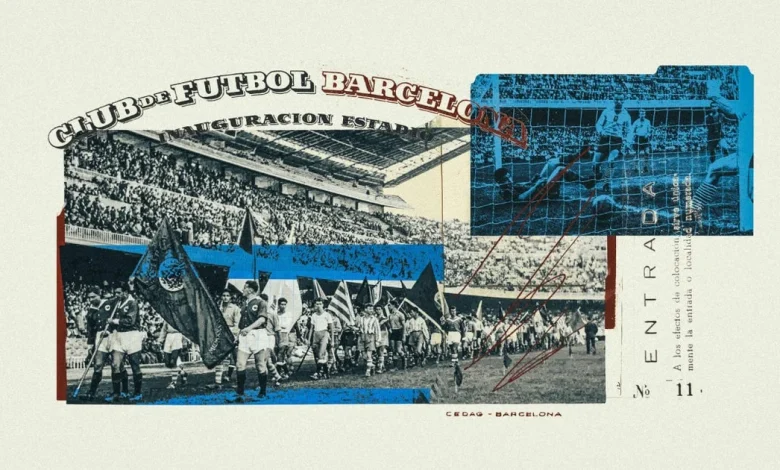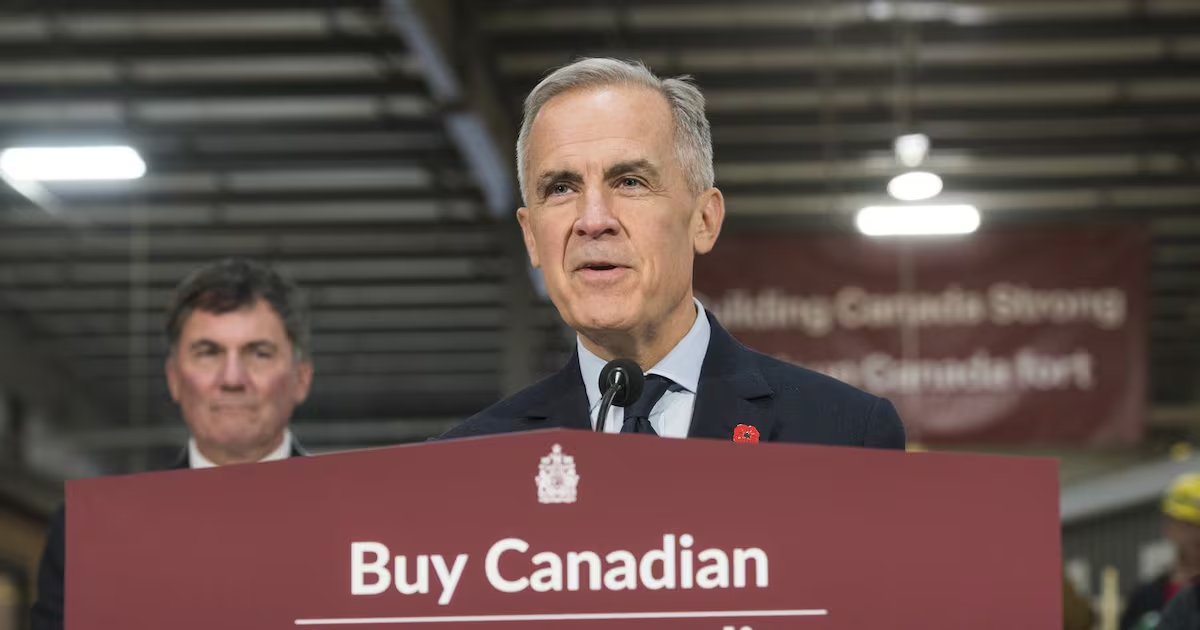Barcelona’s first game at the Camp Nou: East vs West, 10,000 doves and the ‘pitch of a lifetime’ – The Athletic

My grandfather was the 11th fan to enter the Camp Nou when Barcelona’s iconic home ground opened in 1957.
He kept the framed ticket from the inauguration until the day he died, not so long ago. “I went that one time and never came back,” I remember him saying. I never understood why, but he told me the experience had overwhelmed him.
On Saturday, the Camp Nou will once again host a game, two and a half years after it was shut for a €1.5billion (£1.3bn; $1.8bn) redevelopment. It has felt like an eternity for Barca fans — and many neutrals besides — with the team mostly playing across the city at the Estadi Olimpic Lluis Companys on Montjuic.
Barca’s game against Athletic Club and the celebrations around it will be historic — just like that first match against a Warsaw XI on September 24, 1957.
As The Athletic discovered, much has changed since then, but there are also parallels with the circumstances around the Camp Nou’s reopening this weekend.
Why did Barcelona play against a team from Warsaw, Poland? Some believe it was an act of protest; with Spain under the dictatorship of General Francisco Franco, Catalans were referred to as “polacos” (Polish) in a derogatory way by the rest of Spain. But that was not the reason.
“Poland was behind the Iron Curtain,” Barca journalist and historian Frederic Porta tells The Athletic. “Bringing a team from the communist side was an event because they did not usually leave their area of influence. They put together a team for that inauguration.”
The opposition were called a Warsaw XI, but in reality it was the Polish national team. They accepted the invitation despite having a match against Bulgaria in Sofia five days later. Wieslaw Janczyk played for Poland’s football and basketball sides and is the only player still alive from that Warsaw side at 94.
“We arrived in Barcelona on Monday night (September 23), very late, extremely tired after a 14-hour flight, which was particularly difficult on the Amsterdam-Paris leg, where several of our players were ill,” he said in an interview with Polish journalist Mateusz Swiecicki this September.
“We were sure that we would be playing late at night, so we would have 24 hours to rest. And what’s more, the temperature was similar to ours. However, when we got there, the organisers informed us that the lighting facilities at the expanded stadium were not yet ready and that we would be playing in the afternoon, at 4.30pm, and it was terribly hot in Spain.
“We were also asked to take part in the stadium’s opening ceremony during the Catalonia festival and to parade at almost midday. We agreed, what else could we do?”
The celebrations before the game (courtesy of FC Barcelona)
That day was the feast day of La Merce, Barcelona’s patron saint, and a holiday in the city. The streets were decked out in blaugrana (blue and red, Barca’s colours) and events at the stadium began with a solemn mass. The Camp Nou was blessed by the Archbishop of Barcelona, Gregorio Modrego.
That was followed by a giant sardana (a traditional Catalan dance) and parades by various Catalan clubs, penyes (fan groups) and other teams with a connection to Barca. Ninety thousand people filled the stadium and the club released 10,000 doves to bring the opening ceremony to a close.
Barca took the lead through the Paraguayan player Eulogio Martinez (who also represented Spain at international level), against a surprisingly passive Polish defence. Years later, the Barcelona coach at the time, Domenec Balmanya, admitted in an interview with Spanish station TVE that the clubs had agreed for the first goal to be scored by the hosts.
“The club told me that I had to make sure by any means necessary that Barcelona scored the first goal at Camp Nou,” Balmanya said in that interview.
“I went to the Polish team manager and told him that it would be terrible if they scored the first goal, that he could arrange it however he wanted, but that it had to be us. He told me it might cost a little money. I replied that whatever the cost, we had to score it.”
Porta says it was a matter of pride for the club.
“At the inauguration of the previous ground, Les Corts (in 1922), the first goal was scored by a player from St Mirren Football Club of Scotland,” Porta explains. “They (Barca) came to the conclusion that this could not happen again.”
Barca did not play brilliantly but won 4-2, with goals from Martinez, Justo Tejada, Francesc Sampedro and Evaristo de Macedo.
“That match was particularly interesting because it was a clash between East and West, between Polish football and Western football,” Janczyk said in that interview with Swiecicki.
“They were already an elite team in Europe at that time. But technically we weren’t far behind. Yes, they played well and won the match, but they had the advantage of playing at home, with the crowd behind them, and it wasn’t 5-0 or 8-0 or anything like that.”
Eulogio Martinez, on the floor, scores Barcelona’s opening goal (Antoni Campana)
Like now, it had taken Barcelona a long time to get to the Camp Nou.
They had previously played on a pitch located on the city’s Calle Industria. Named the Camp de Les Corts after the neighbourhood in which it was located, the stadium had become too small for their star Hungarian player, Laszlo Kubala. They had expanded the old stadium twice to accommodate all the fans who wanted to see Kubala live and the thousands of members they had gained during his time at the club from 1951-1961.
Seen as a pioneer who scored 288 goals in 361 games for the club (both official and unofficial), Kubala is the only person to have a statue at the Camp Nou other than their legendary former player and manager, Johan Cruyff.
“(President) Agusti Montal i Galobart’s board of directors bought the first plots of land for Camp Nou in the 1940s,” says Porta. “It was between La Maternidad (a now-defunct maternity hospital next to the stadium) and Les Corts cemetery, which led to it being called the field of a lifetime — between where you were born and where you died.”
In another parallel with the work since 2023, the initial construction of the Camp Nou was incredibly expensive. It was estimated to cost 66million pesetas (around €1.4m in today’s money), but it ended up costing 288m pesetas, or almost €1.8m.
A view of the Camp Nou in 1962 (L. V. Clarke/Fox Photos/Hulton Archive/Getty Images)
“Its construction was a disaster of mismanagement,” says Porta. “The cost of materials spiralled out of control, leaving the club financially ruined after the (1961 European Cup) final in Bern (which Barca were beaten 3-2 by Benfica) and unable to sign good players for 14 years due to the economic situation inherited by president Enric Llaudet (in charge from 1961-68) from the previous president Francesc Miro-Sans (1953-61).”
Barcelona went from having a stadium with a capacity of 60,000 to 93,053, making it the largest in Europe. It has been that way ever since.
“Cules’ (a nickname for Barca fans) first impression upon entering Camp Nou was to be impressed by the large size of the stadium and the distance between the players and the stands,” says Porta. “They were used to the pressure of the Camp de Les Corts, which was like an English ground where the crowd was closer to the players. At Camp Nou, everything was further away.
“They called it ‘El Liceo’ (the city’s oldest and most iconic theatre, where opera is now performed). In the first Barca-Madrid match played there on February 2, 1958, Madrid won 2-0. After the match, Real Madrid striker Hector Rial said he did not understand the atmosphere. He said that if Barcelona fans did not cheer on their team, they would not win any matches at home.”
Lluis Sola is a 94-year-old Barcelona fan who attended the inauguration with his father, brother, uncle and two cousins when he was 26 years old.
“Back then, there weren’t any plastic seats,” he says. “At the entrance, they sold cushions to make you more comfortable. When people got angry, they threw their cushions onto the pitch and it would be covered with them.
“I was very good friends with (Armand) Caraben (who was involved in Barca’s management and helped bring Cruyff to Barcelona in 1973). I told him I missed the Les Corts stadium because it was smaller, cosier, more ‘member-friendly’, even though we were cramped in there and we didn’t have as much space as we do at the Camp Nou. He told me he missed it too, but there was nothing he could do about it.”
The 11th ticket to the inauguration kept by Cervello Herrero’s grandfather (Laia Cervello Herrero)
The immensity of the new stadium overwhelmed my grandfather and other members, but evidently not everyone, given how its capacity has only grown since then.
Before the 1982 World Cup hosted by Spain, a third tier was added to the ground, taking the total number of fans to 99,354. This remodelling will see that number increase to 105,000.
For now, Barca will be playing with a reduced capacity of 45,000. Barca figures have mentioned the summer of 2027 as a target for when they might reach 105,000 seats, but there is no confirmed date for that.
In the meantime, supporters may still feel that sense of wonder my grandad and others experienced 68 years ago when they walk back into the Camp Nou on Saturday afternoon. It has been a long time coming.





